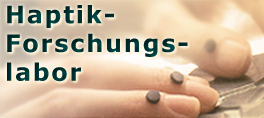Language development disturbances
Introduction
To recognise the properties of physical objects and build a mental representation of them is a prerequisite for the acquisition of words referring to objects, words that hold a key role in early lexical development. Object words account for about 60% of nominals. Words that name solid objects encode the first set of meaning, they can be understood by a healthy infant beginning between the 10th and 12th month and, soon after, be reproduced in child-specific language [1–6]. At first object words are generalised to new instances on the basis of perceivable similarities.
A healthy infant possesses an innate cognitive predisposition, which allows the encoding and retention of sensory input about concrete objects. They can be experienced through several sensory organs in accord, since they are tangible and perceptually stable. According to J.J. Gibson [7, 8], objects demand touch and haptic exploration due to their ‘affordance’ (a salient property of an object), independent of the individual’s ability to recognise those possibilities.“ Affordance links perception to action, as it links a creature to its environment. It links both to cognition, because it relates to meaning” (E.J. Gibson [9] p. 4) Thus infants form object representations from real-world experience viewing and touching objects.
To categorise an object, certain perceptible information of elementary properties, such as shape or texture, has to be present. “It is just the properties of the objects themselves that are relevant when the child begins to discover regularities in the physical world” (Sinclair [10] p. 123). These perceptual features will become semantic features in time. The information differs depending on whether a child experiences the physical world passively tactile (passive touch, without any muscular effort) or through action (active or dynamic touch, also called haptics, obtaining not only cutaneous but also proprioceptive information from receptors in muscles, tendons and joints). Categorisation is the first evidence for conceptual organisation; such concept development plays a large role in (object) word learning. But children must also learn categories of actions. Because information about salient properties of an object is stored in sensory and motor systems active when that information was acquired, objects concepts belonging to different categories are represented in partially distinct neural networks [11].
...
<link>contents «Human Haptic Perception», Grunwald (Ed.)
<link>« Self-injurious behavior
<link>» Haptic perception in Anorexia nervosa
<link>references: Language development disturbances
<link>references: chapters, <link>all





